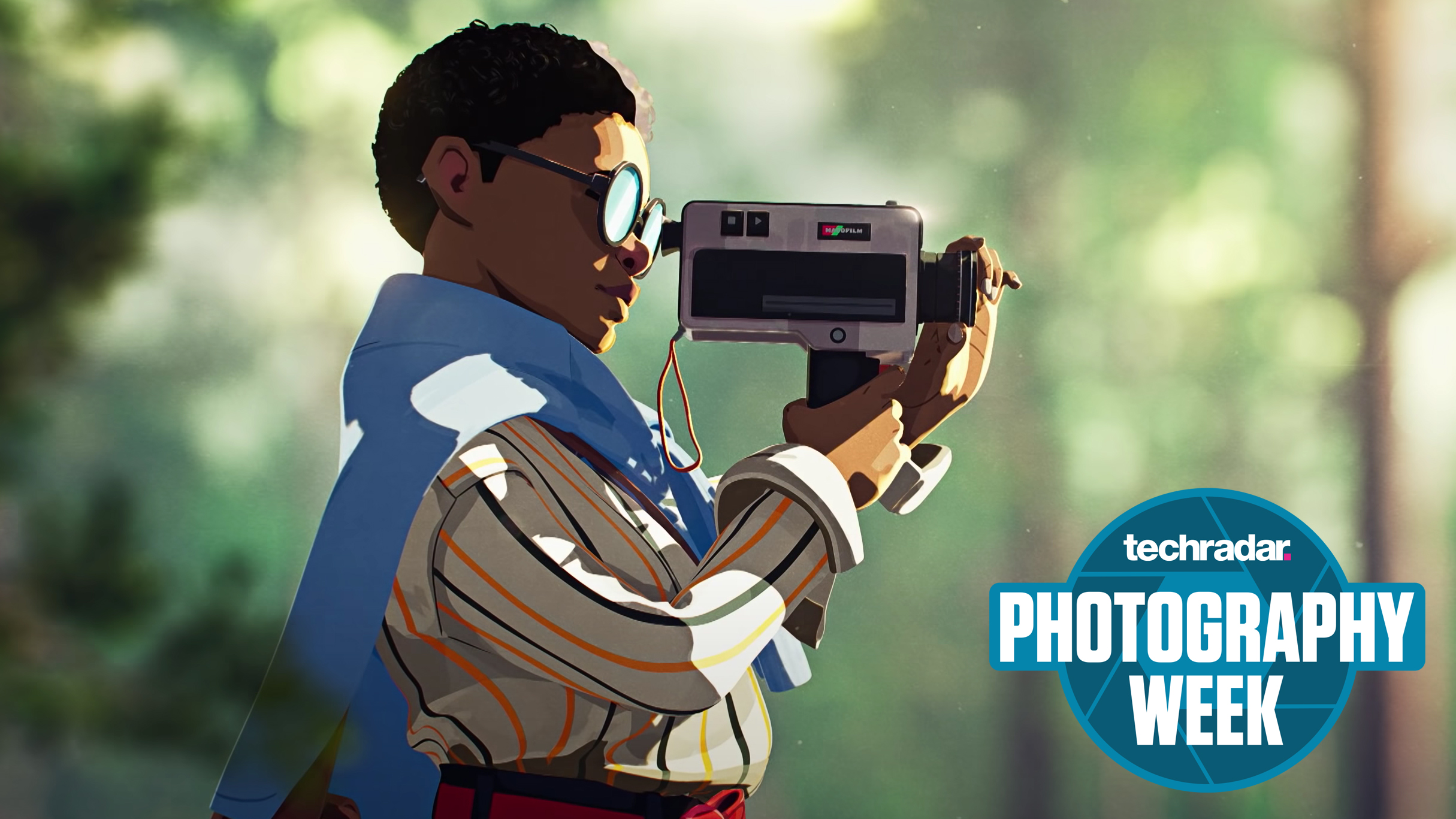
How can the camera change the way you see the world? This is a basic question of photography, but also more and more photo-centric games, including the highly anticipated PS5 and PC adventure season.
The season is part of a recent wave of game that makes their foundation photography, rather than bonus mode adapted. Some, such as the generation of views, presents the past as an urban form art, a tool to regain space through documentation. Others, such as the classic Japanese horror game Fatal frame, use the camera as a weapon, someone who is able to eliminate the presence of the devil.
But when a member of the season development team told us in exclusive interviews, their games were different. This is a quieter and more contemplative degree that appreciates careful observation. And virtual cameras, rooted in meditative film photography, designed to foster intimacy between players and the environment.
This is the best PS5 game that you can play now
Analog approach.
In the trailer expressed by the season, we saw a young protagonist of cycling around the beautiful studio of the world of Ghibli-Esque. “Our grandparents live for a thousand years, and our parents have a century for themselves,” he said sadly. “But we, we have one season.”
The world, as he knew, was on the verge of destruction, and to make the most of his last days, he left with a bicycle with the aim of recording his beauty. We saw a glimpse of the sketchbook full of damaging monument images, the tape recorder captured the sound of dragonfly wings, and, most importantly, the camera was directed at bright-eyed primates.
“Everything in the game is about what photography is about, ” said the creative director and writer in the season, Kevin Sullivan.” What does it mean to take photos, what is said about the photographer, the fact that we can freeze time into the image, a glimpse of incomplete from the past. This is very in line with the theme we are trying to show to the player, “he added.
Season, developed by Montreal-based studio scavengers, has been done in one capacity or another since 2016, when it was only the idea of Sullivan inspired by his journey in Southeast Asia. Before anything it has been programmed, it makes an essay of video for the team, and even a functional board game to show how it can work in practice.
Now the production of the game is in full swing, the shape is a little clearer. There is a world to explore filled with people to talk to, and of course, bicycles to get around. At various points you will be able to issue your camera to document your environment – animals, of course, and the Vistas panorama, but architecture and graffiti, all of which provide something special about that place before “mysterious Cataclysm washing everything.”
In fact, photography in the season has changed a lot since the initial trailer of 2020. Camera fans can see a machine that resembles a retro-style video camera (above), but this has turned into a more easier film camera, said Stephen Tucker, Senior VFX Artist.
What does not change, he explained, is an emphasis on “older forms” documentation. A sharp photographer, he mentioned his own polaroid camera, a pleasant artifact that emerged from using vintage films with analog and relative cameras “lack of control” if the offer. “You won’t have a zoom range from 10mm to 300mm or something,” he continued. “You have to stand in the place you need to take photos you want.” The goal in the end, he said, is to make a device that feels “texture.”
Depth of Field
Tucker is not the only photography fan on the season development team. Sullivan’s father is an air photographer, which means the underground family of his family is basically a giant dark room. Then, in college, he began to be interested in processing analog films while working on super 16mm film projects and 35mm friends.
There is also Irwin Chiu Hau, 3D programmer of the season, who once worked as a professional photographer at weddings. He has his own DSLRs collection and now he takes photography of landscape and macro for pleasure. The last one, essentially the extreme foreground photograph, feeds directly on the season. “There are many small things in the world to shoot,” says Chiu Hau Tantalizing.
But outside of the devices of the real world, previous video games have helped configure the camera in the game of the season.
Tucker refers to the discardable chamber of the 1980s used at the Firewatch Drama 2016 in the first person. In that game, you can break the beautiful forest and mountains of Wyoming, covered, at various points, in the sun of radiant orange. Another first-person adventure of 2017 What remnants of Edith Finch?, Who gives players an old school camera during the duration of a rainy hunting trip. “I love the feeling of the cameras in both games,” says Tucker.
Firewatch and what remains of Edith Finch? He arrived before video game photography, since a mechanic in the game became really popular. More recently, the life of sludge and the award-winning generation of Umurangi have launched players as photographers in different Cyberpunk futures. And a few months ago, Cult Classic Pokémon Snap made his return so expected so that the players get excited with favorite papillae.
There are also two titles on the horizon that promise to add their own turning to the growing micro-gender. TOEM is a cute-looking adventure with anthropomorphic characters, while Martha is dead (above), she takes the camera to the floalable territory with her Italian horror story of the 1940s.
Photography as a mechanic is apparently in rude health, but none of these games offers enough agitation, the melancholy beauty of the season: the feeling that the present slips through our fingers and must be commemorated in some way.
A change in the approach
Even so, regardless of the tone and mood, what each of these games offers is a way of interacting with the world that does not involve blowing it or its inhabitants.
The camera can be a useful way to structure the look, to give the simple act of looking at a mechanical dimension for players who are willing to do something always.
Perhaps most importantly, it is an action that is intuitive for most people thanks to the extent that smart phones have popularized the hobby. Everyone knows what to do, in other words. “At the time you take a camera, you start to compose,” says Chiu Hau, “begins to frame the subject.”
While photography is folded increasingly in the game of indie titles, for many box office successes, it exists as a discrete “photographic mode”, separated from the game itself. All the player should do is to pause the action at a particularly captivating moment and start composing his shot.
In the popular and striking action titles, such as Horizon Zero Dawn, God of War and the last part of us, Part II, there is almost a suite after folded production in their photos of photos, from lighting, focus, Until the field of sight. Often, there are options to change the environment, including time of day, climate and even real accessories on the shot.
While these tools are recently flexible, they are part of a tradition that is almost as old as the games themselves, the one of the so-called “screenshot”, the antepended of the modern video game photography.
Virtual tourism
Throughout the pandemic, Tucker says he has been enjoying Blockbuster video games as a means of vicarious travel, photographing his way through the stories and worlds of him as if he were in one of his own Adventure holidays.
The exuberant vegetation and the impressive ruinous environments of the last part of us, part II, have offered a worthy issue, so he has begun to print photos in the game using the Instax Mini Link.
For Sullivan, the season itself has manifested itself in the real world during the last eighteen months. “I’ve been riding a bicycle by Montreal and took pictures in an effort to try to learn more about that,” she says. “I feel there is a stranger from one side to another between the things we do influence the game and feel influenced by the game itself, only in certain activities and paying attention, the season feels like it was bleeding in my real life more Of what he had anticipated, he would do it when I began. “
Sullivan’s own experiences are precisely what is attractive about the season and the photograph of it in the game. Players seeking all the bells and whistles of “photo modes” can end disappointed, and those who expected all the controls of a modern DSLR.
But those interested in experiencing the emotional essence of photography, specifically, simplicity and immediacy of an analog camera format, must be well served. By giving players a tool of the past, the season can cause a completely new perspective over the world.



